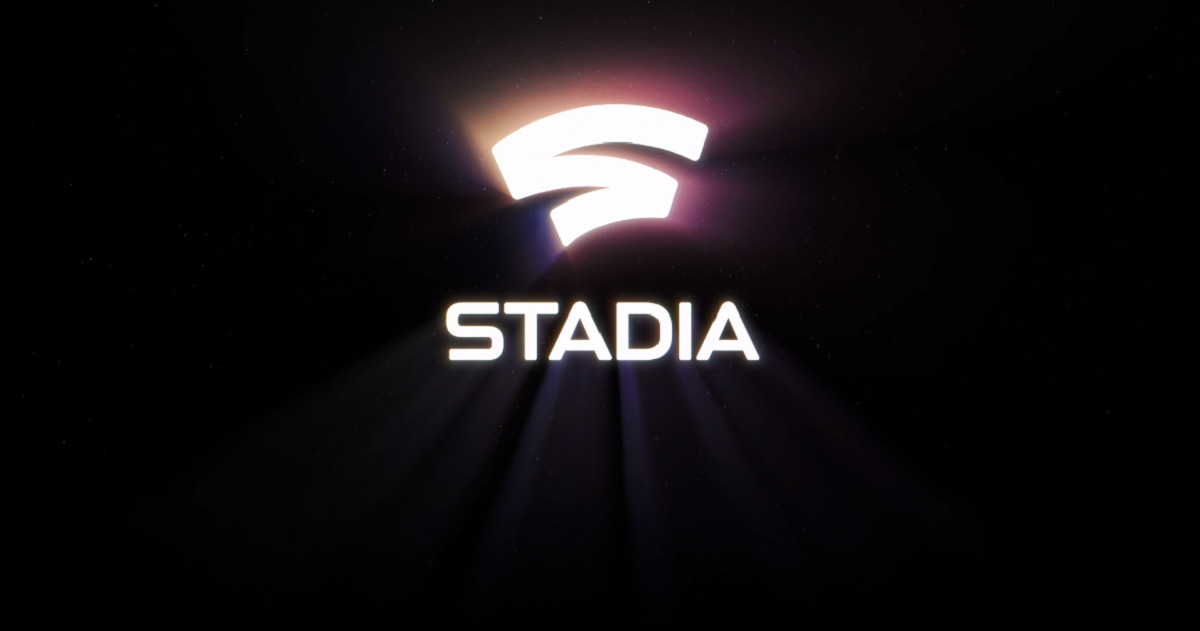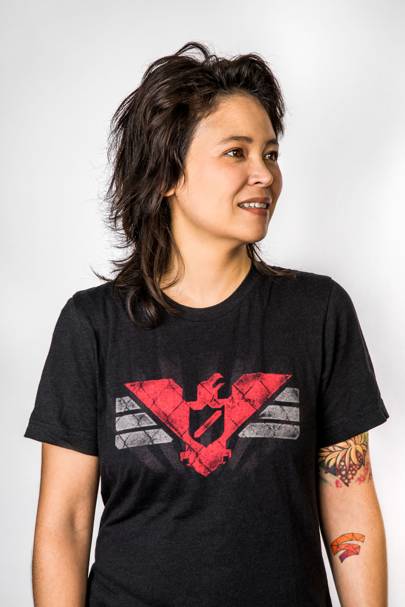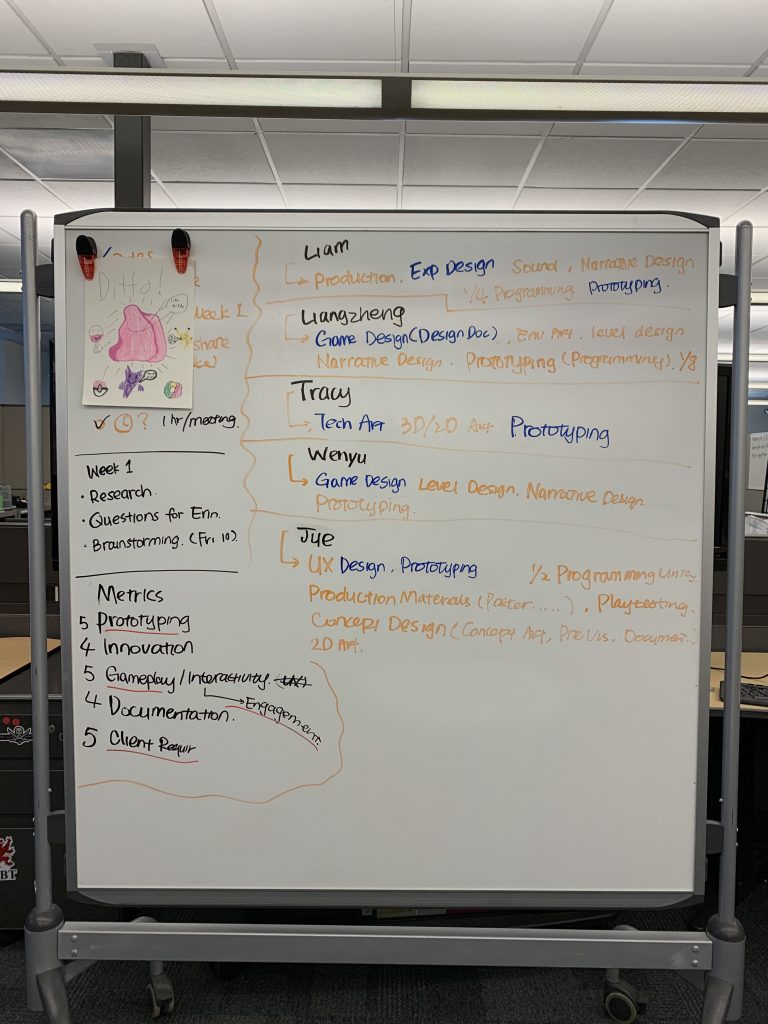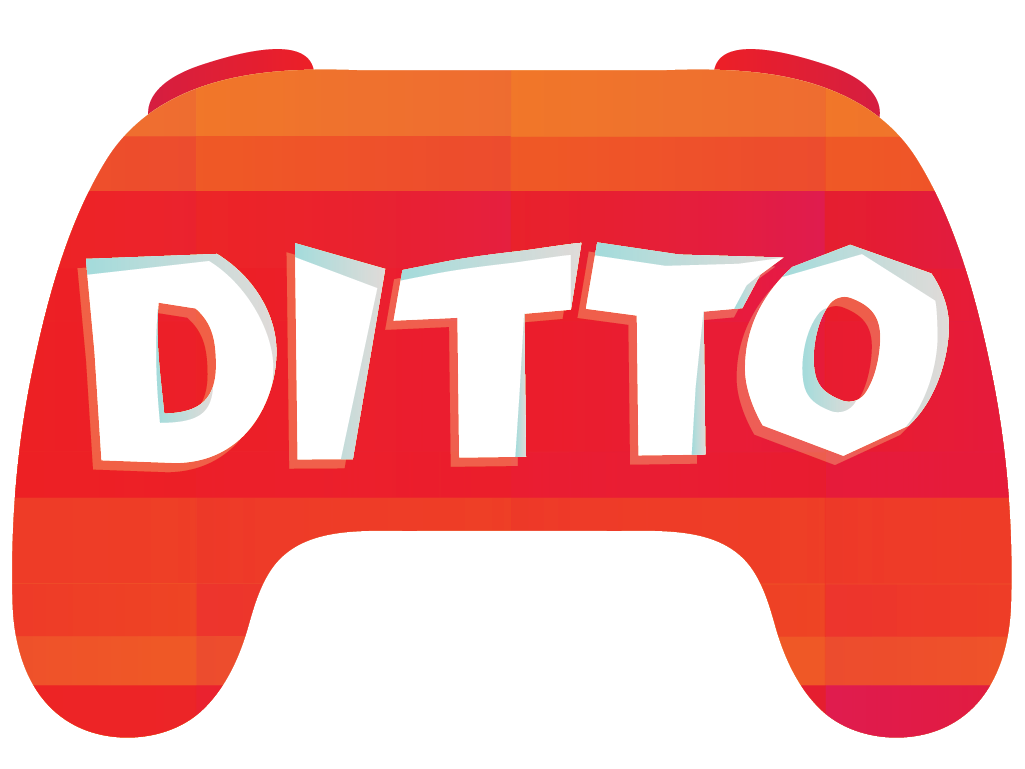Week 1: And we’re off!

What is Project Ditto?
Project Ditto is a collaboration between the ETC and Google Stadia in which we are tasked with building a demo that uses the State Share feature of Stadia in a novel and compelling way. State Share leverages cloud game hosting to enable players to share a complete game state instantly with their friends or to the public. It allows you to take 30-second snapshots of your current game’s state and share them online to whoever you want, allowing anyone the ability to “jump” directly into that specific instance of your game. Here’s a link to Stadia’s blog on the subject.
Who is Our Client?

Our client this semester is Erin Hoffman-John, the creative head of StarLabs, the R&D arm of Google Stadia. Prior to this, they were Chief Designer and CEO of Sense of Wonder, and independent developer of “smart fun” games, as well as an Assistant Teaching Professor at Carnegie Mellon University’s Silicon Valley campus (in fact, she used to be a faculty advisor on past ETC projects!).
They have also led game design at GlassLab, a three-year initiative to establish integrated formative assessment educational games, which was supported by the Bill and Melinda Gates Foundation and the Macarthur Foundation.
Her game credits include Mars Generation One: Argubot Academy, Kung Fu Panda World, and GoPets.
The Work This Week
General Housekeeping and Team Roles

The first order of business this week was to start organizing both the team and broader project goals for the semester. While our project is oriented around discovery, meaning that everyone will weigh in on the overall design throughout the production process, we wanted to quickly determine as a team what everyone’s preferred roles would be in order to be able to delegate tasks according to people’s interests. As such, we were able to determine not only people’s interests and skillsets, but also what they wanted to get out of the semester as well.
We were also able to determine our metrics for the semester relatively quickly, which we narrowed down to the following three categories:
- Prototyping
- Gameplay/Interactivity
- Client Requirements
Team Roles
- Liam: interested in production and experience, sound, and narrative design; 1/4 programmer
- what they want to get out of this semester: design and prototyping
- Liangzheng: interested in game design (including documentation), art implementation, level design and environmental art, narrative, and small prototyping; 1/8 programmer
- what they want to get out of this semester: game design (including how to write game design documents)
- Tracy: tech art, 3D or 2D art, small prototyping (programming)
- what they want to get out of this semester: tech art and prototyping
- Wenyu: interested in primarily game design, level design, narrative design, as well as a little bit of prototyping (programming)
- what they want to get out of this semester: game design experience
- Jue: UX design, prototyping (1/4 programmer), branding materials, playtesting, concept design (concept art, previz, documentation), 2D art, modifying existing 3D models (NO rigging)
- what they want to get out of this semester: more comfortable with design and prototyping (both programming and physical)
Client Meeting
We met with Erin for the first time this week, and got off to a great start! Before the meeting, we prepared a series of questions to ask Erin in order to clarify not only the parameters of the project this semester, but to settle a few logistical problems as well (i.e. when should we meet every week?)
- Logistics
- How frequently does she want to meet with us?
- Is there a good time window every week we can block for the meetings?
- If we need to communicate remotely, how should we contact her over Google Hangouts?
- If we need tech support, who should we contact?
- Any other resources/support they could provide?
- Actual Product
- Does she prefer a polished product, or a few unpolished prototypes?
- One product vs. a couple of rough ones
- What is our target demographic, if we have one?
- If there is any preffered genre?
- What’s the deliverable? Game or game + documents (design documents)
- What’s the brand image and story Google like us to convey, if there’s one?
- NDA? What can and can’t we put on our project and personal websites?
- Multiplayer? Asymmetric?
- Platform? Cross-platform?
- What are some existing ideas/designs/features google has for state share?
- Would they like us to explore any of these in our design process/iteration?
- Does she prefer a polished product, or a few unpolished prototypes?
- Tech Stuff
- What basic framework can we have from Stadia & Google team? Like networking structure, Stadia API, etc.
- Any preferred platforms? Is Unity good?
Ultimately, it seemed like the answers to many of these questions were that we could really take this project in whatever direction we choose! Erin didn’t have a preference with regards to genre or platform, though they did emphasize multiplayer gameplay, since that’s something that the Stadia infrastructure readily supports. They did stress that it would probably be a lot easier from a development standpoint to create prototypes using Unity and not the Stadia API, since it would take a bit of time to get us onboarded onto the service due to a variety of reasons.
We were also able to define our final deliverable as both one final prototype that uses state share (or at least, a “state share inspired” mechanic) and game design documentation that discusses not only our final prototype’s design, but also provides one-page designs on the prototypes we built along the way.
From a logistics standpoint, we tentatively blocked out 11:30 am on Wednesdays as our weekly meeting time for a 30-minute meeting, as that’s the length that works best with Erin’s schedule. We say “tentatively” just because, after getting a glimpse of Erin’s calendar during the meeting, it became very clear that this time slot could be subject to change at any time, and that we would probably have to be flexible on when we could meet with her.
We learned that there will be an NDA, which we will sign next week
Initial Brainstorming
After our client meeting, we ran our first formal brainstorming meetings to begin thinking about what kinds of games we could create that integrated State Share as a core feature. Since we were completely untethered to one particular kind of genre, this allowed as the ability to come up with a ton of ideas (almost 30!) that tried to centralize State Share as a mechanic in some way.
Our brainstorming session also proved useful, in that it also generated a lot of questions we had regarding the State Share feature itself.
Some questions we have already been mulling about:
- How does Crowd Play combine with State Share?
- Will other players be able to permanently overwrite your saves, if given the option?
- Can we merge states?
- Can I bring a save back into the main branch of a game?
- Ex. if I beat a boss for my brother, will it change his main save, or will it just be a different save?
- Will it be possible to choose a save to merge back into the main branch?
- Ex. if I beat a boss for my brother, will it change his main save, or will it just be a different save?
- Can I use elements of a new save to override the same elements of an old save?
- I.e. keep the world save, but update the character and inventory?
- Can I bring a save back into the main branch of a game?
- Will I be able to keep this game save after I am done playing?
- Google did not detail if State Share will allow others to keep the save files of games shared with them. It is currently unknown if it is only a one-time link.
- Will Stadia be free to watch sometime in 2020?
- Can you embed multiple states in a video file or an image?
The Plan for Next Week
Next week, we hope to not only continue the brainstorming process and iterate on the ideas we came up with this week, but also to ask Erin a lot more questions about the State Share feature in order to give us a better sense of what aspects of State Share we should be “faking”.

Recent Comments